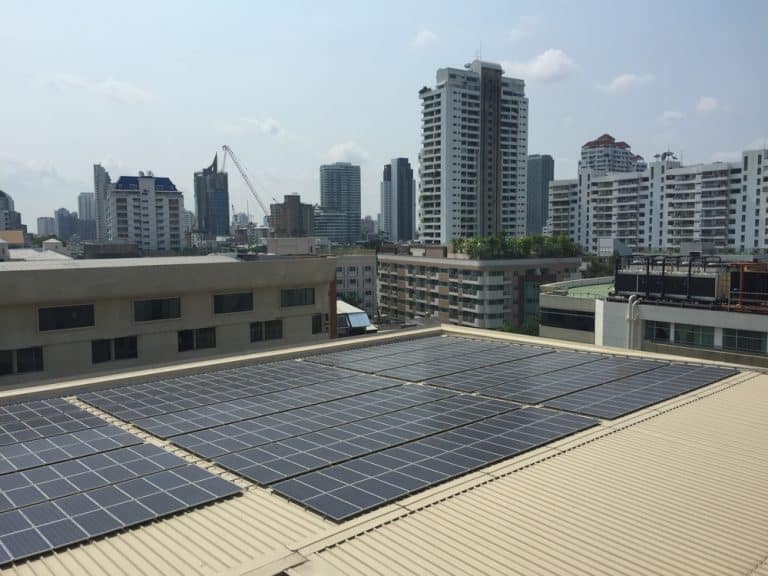Utah Commercial Solar Power – What Most Installers Won’t Tell You

Did you know that if you own your office building, you can write-off 100% of the cost of commercial solar within 1 year, saving you dozens of thousands of dollars in operating costs over the next 25 years?
And that’s just the beginning.
Getting solar power for your commercial business provides a great return on investment. Power bills are one of the largest expenses and solar cells decrease them, especially if you own your building. The main reason why solar saves money is the incentives for renewable energy. Here are the steps involved in the commercial solar bid process for Utah businesses, including some facts of which you may not be aware.
Important Details Most Commercial Solar Installers Forget to Mention
Commercial solar makes sense for almost all businesses, but makes the most sense for businesses that:
- Own their building
- Have steady cash flow
Your Solar Consultant Has Two Objectives When Speaking to You
- Verify an address
- Get a copy of your power bill.
Once they have a copy of the bill, they’ll call Rocky Mountain Power and ask for their rate schedule (remember, there are roughly 25 different rate schedules for commercial installations, so this part may take a bit of time). Cash and financing will be discussed only at the point of the consultation.
Tax Credits for Utah Solar
- Prospect must own the building to qualify
- Businesses are able to write-off 100% of their solar expenses in the first year if they own their properties.
- You can’t rent the space and qualify for the credit.
- Businesses that tend to be able to qualify based solely on building ownership are chiropractors, dentists, orthodontists, medical businesses, law practices
- Non-profits like schools and churches aren’t always the best options for commercial solar in Utah as they don’t have tax liability.
Technical Details of Utah Commercial Solar
- If you’re trying to reduce your bills, we use a HiQ inverter 5kw inverter, which is the size of a laptop and is positioned beneath the solar panels themselves.
If you fit the conditions above, a solar panel installation for your Utah business building may be worth considering. Looking at the differences and weighing the pros and cons will help you in this decision.
Utah Investment and Production Tax Credit
There are two different state solar tax credit options for Utah businesses. These include the investment tax credit ( ITC) and the production tax credit (PTC).
Investment Tax Credit
The ITC for commercial installations is 10% of the cost of their solar array or $50,000. Whichever is less is the credit that you will receive.
Production Tax Credit: Commercial Only
Photovoltaic systems that are between 660 KW to 2 MW can choose to use the PTC or the ITC. The PTC pays $.0035 (.35¢) per kilowatt of power produced in the first 4 years after install.
For the minimum system size that would equal about $2.31 per day of optimal production. Over 4 years the max amount you could receive would be $843.15 per year which would equal $3,372. 60.
In either case, these are both tax credits. If you do not owe the amount that is being credited, you will not receive cash for the excess. Instead, this credit will carry over to the next tax year as a credit toward that year’s tax liability.
Alternative Energy Development Incentives
This incentive is for systems that are 2MW or bigger. Eligible applicants get a tax credit of 75% of the new tax revenues either over the life of the system or 20 years. These tax revenues include state corporate sales and withholding taxes.
PACE Financing
If you are getting a system that is under 2 MW, you may qualify for a PACE loan. These are no money down 30-year loans, which don’t show up as a debt.
Federal Business Energy Investment Tax Credit
The Federal ITC will cover 30% of your system if construction starts before 2020. In 2020 this credit will drop to 26% and continue to drop each year until it reaches 10%.
1603 Treasury Program Grant
The 1603 grant allows project developers to receive a direct federal grant in place of the ITC. This program gives direct federal grants that are equal to 30% of the system.
Modified Accelerated Cost Recovery System: MACRS
Through MACRS you can get a 5-year income tax deduction. If you also claim the ITC or the 1603 Treasury Program grant, your tax deduction will decrease by half the value of the 30% ITC.
What the Utah Solar Energy Association Has to Say
35,000+ homes and businesses have installed solar so far. The USEA reported in their 2018 solar rates graphic that the main reason why Utahans get solar is to save money.
USEA has also reported that solar systems pay for themselves in less than 15 years. This calculation is with the transitional program Rocky Mountain Power has implemented.
The average homeowner saves $1,200 a year. This means that for your business that uses quite a bit more than the average home you can expect to save even more.
If you would like a no-obligation estimate for your business, you can contact Go Solar Group. Our team will get you set up with a free customized quote.



Send a Message
Oops! We could not locate your form.